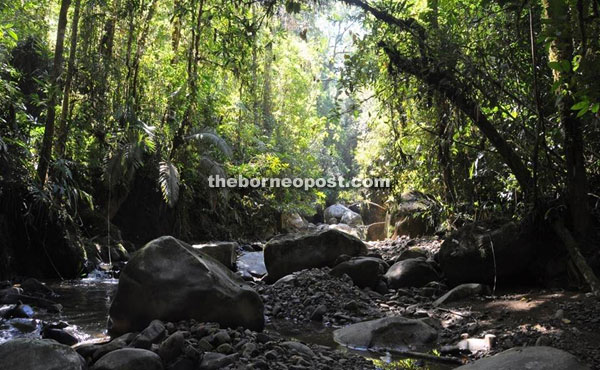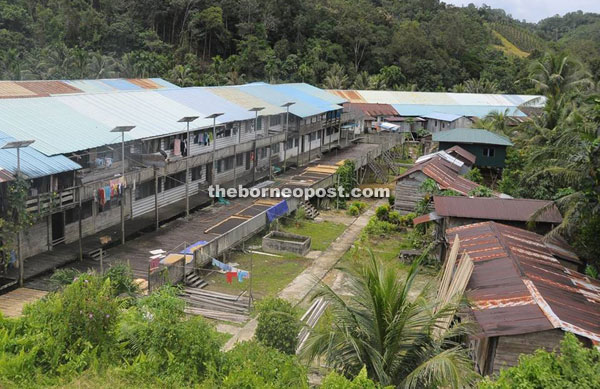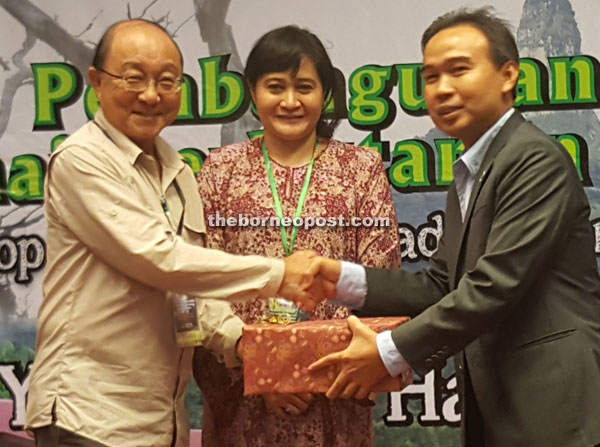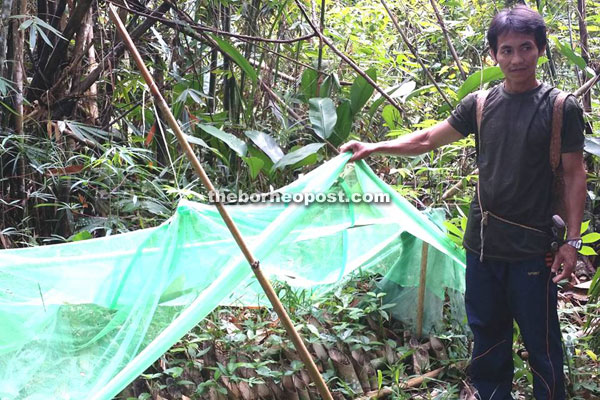
Many forests hold a rich array of biodiversity. — Photos by Cecilia Sman and Paul Chai

One of the communities living near the TPA.
MIRI: Sarawak undeniably has achieved many successes in sustainable forest management, conservation and social forestry; a fact acknowledged globally including by the International Tropical Organisation (ITTO).
However, there is still much to be done, especially on social forestry, including standardising its strategies with the would-be national roadmap on the subject.
It was with this intention that a three-day Workshop on National Roadmap on Social Forestry was held recently (May 17 to 19) in Miri, the outcome of which is expected to be discussed at the national level workshop scheduled on July 18 in Kuala Lumpur.
Thereafter, it would be merged with the strategies formulated by Sabah and Peninsular Malaysia to form a comprehensive national definition and outline a roadmap for social forestry in Malaysia.
The mission aims to create a participatory and innovative social forestry for sustainable management of forest resources and to enhance the well-being of indigenous and local communities through active participation in social forestry while at the same time ensuring food security and addressing climate change.
ITTO project leader in Sarawak Paul P.K. Chai was among the six paper presenters at the workshop. His paper entitled ‘Community Participation in Conservation’ stressed the importance of such involvement.
Social forestry involves people in forest management — community-based forestry; forestry for the people and by the people; promoting the growth of forest products, resource protection and conservation as well as encouraging the development of skills in resource use and management.
This is especially relevant in Sarawak, where 50 per cent of the population of 1.3 million people live in rural areas.
Chai said although the indigenous and local communities are rich in local knowledge and understand social forestry management, they are not consulted in forestry and conservation matters — all of which falls to the government.
“There are also laws prohibiting community use of resources for example in forest reserves and national parks. People are branded as ‘encroachers’/‘trouble makers’ and they must obey or be prosecuted.
“There must be some flexibility but undeniably there are some enforcement officers who are very strict and this has resulted in conflicts with the authorities. An example of which was the case in Lanjak Entimau Wildlife Sanctuary,” he said.
He said the outcome of such laws resulted in indifference, non-cooperation, distrust and resentment as locals said they were regarded as ‘outsiders’.
Ironically, he said many of the locals live close to Totally Protected Areas (TPAs) and can be the eyes and ears of the government.
They can be engaged as local rangers to help keep outsiders out and thus strengthen enforcement and on-ground management.
Chai stressed that conservation and community benefits work both ways, adding that TPAs can fulfil conservation objectives while meeting local needs.
“Local knowledge (forests, resource utilisation) is very important for enhancing biodiversity conservation, management, and research and development (R&D), but is often taken for granted.
“There must be co-management and resource sharing to promote a sense of ownership and responsibilities in conservation and sustainable utilisation,” he said.
He added that habitat disturbance was reduced when dependence on forests is reduced.
He stressed that various strategies need to be taken so as to develop mutual trust and understanding through two-way communication.
Among the strategies put forth are provisions of sustained and systematic approach in resource utilisation, for example in the cultivation of indigenous fruits such as petai, dabai, mata kucing, fisheries and planting of gaharu and other herbs, while the women can be involved in handicraft making.
“ITTO and Forest Department Sarawak have implemented several projects like these in Sarawak. These projects will surely enhance self-reliance which leads to reduced dependence on forests, thus ensuring food security and regular incomes for the locals,” he said.
There is an increasing recognition of indigenous and local communities as integral part of forests and environment, playing vital roles in achieving
and enhancing sustainable utilisation and conservation objectives.
“There must be a change in government policies to promote co-existence and harmony between people,” he stressed.
“Change takes time as it involved change of mindset, perceptions, cultures, beliefs, accepting new ideas and challenges, the willingness to change and the need to understand each community’s different needs.
“The vital ingredients for success are consultation, interest, commitment, the spirit of cooperation, strong leadership and sustained project support including finance and technical input,” he pointed out.

Forest Department acting deputy director Jack Liam (right) presents a memento to Chai (left).

One of the Penan initiatives for the cultivation of crops.
